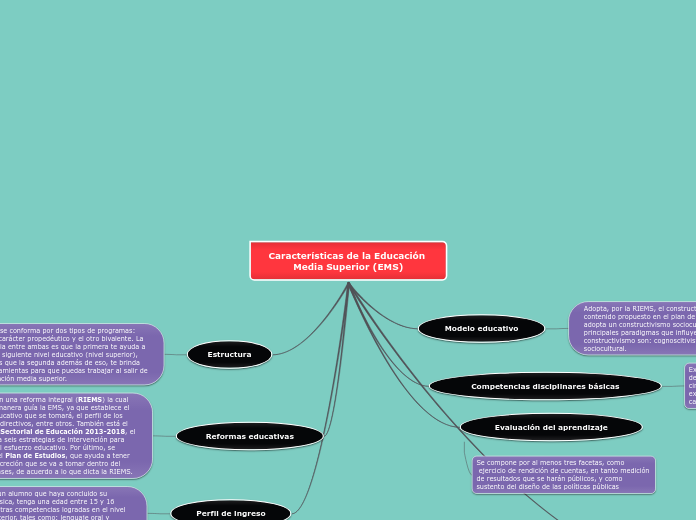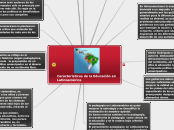Competencias transversales
To name your story, you have to think about the overall message and what you want your audience to understand from the story. Also, make it relevant and easy to remember.
Las competencias transversales en el aprendizaje.
El aprendizaje por las competencias se encuentra vinculado al entorno en que tiene lugar, en
diferentes tiempos y contextos, es decir, que es un aprendizaje situado.
Aspectos específicos del aprendizaje:
la construcción de los programas
de formación.
las actitudes en el desempeño ante actividades y problemas.
los valores
Las habilidades
las destrezas.
los procesos cognoscitivos.
la integración de los conocimientos.
constituyen la base fundamental para orientar el aprendizaje a lo largo de la
vida.
Herramientas
Indicadores
principios
se dividen en cuatro
The ending of a story is essential. We all know that if the ending is weak, what happened before loses its importance. So make it unpredictable, but fair. A resolved ending answers all the questions and ties up any loose threads from the plot.
Relacionarse y cooperar con un conjunto de personas actuar con valores
en un entorno ciudadano
This is the closure section of the story.
See examples of possible outcomes below:
- all problems have been solved
- it's clear how each one of your characters ends up
- your main character is transformed by the challenge
Aprender a aprender;
This is the moment when the main character surpasses the last obstacle and finally faces their greatest challenge.
The climax usually follows one of these patterns:
- realization
- resolution
- choice
Type in your answer.
esta competencia se
define como: “la habilidad para iniciar el aprendizaje y persistir en él, para organizar su propio aprendizaje
y gestionar el tiempo y la información eficazmente,
comprende 3 dimensiones:
dimensión metacognitiva
se refiere al conocimiento y a la reflexión sobre los propios
procesos de aprendizaje, al control de ese proceso y a tomar conciencia del mismo.
la dimensión afectiva o emocional
incluye factores que contribuyen a crear situaciones favorables para aprender a aprender.
la dimensión cognitiva,
incluye habilidades
básicas que permiten obtener y procesar nuevos conocimientos.
UNESCO
La UNESCO (2009), ratifico que todo el sistema educativo se encuentra preparado para facilitar el
aprendizaje formal.
el concepto AVL requiere un cambio total de modelo: que pase de la enseñanza y la capacitación a la de
aprendizaje.
Alfabetización.
Se entiende como un proceso
continuo, en el que se manifiestan diferentes dimensiones y grados de habilidad.
enfoque funcional.
enfoque dicotómico
Transversales o genéricas:
The middle of the story is where you add layers of complications that will lead to the end. Reveal more about the character's journey. Did their personality go through changes? How did they overcome the challenges? And as you build up the story’s central conflict, make it more personal to that character. Also, from the middle act, you have to lead into the final act.
orientan la formación de los seres humanos hacia el
desempeño idóneo en los diversos contextos culturales y sociales.
Es importante generar las siguientes posibilidades:
There wouldn't be any tension and excitement in your story if there weren't any obstacles in your character's way.
la conciencia de ser,
el comportamiento ético
mantener los valores
Aprendizaje
relaciones interpersonales;
A story is nothing more than a character overcoming a series of difficulties to reach the desired goal. Obstacles usually create suspense and conflict. In overcoming obstacles, there is growth: weak becomes strong; hatred turns into love; sadness into happiness; wrong into right; lies into truth; or evil becomes good.
See a few examples below:
- stopping a meteor
- finding a killer
- finding love
a través de la autonomía, la confianza, la motivación y el autocontrol, desarrollar la empatía, la adaptación a distintos
entornos y la flexibilidad,
Se les llama genéricas porque su desarrollo potencia el desarrollo de otras destrezas, habilidades y
competencias.
Your character(s) need(s) motivation in order to solve the challenge(s).
se consideran competencias claves en la formación del individuo, no sólo a nivel profesional sino también a nivel personal y social, debido a que integran
componentes motivacionales y cognitivos.
Secondary characters might also have motives that lead them to cross paths with the main character or which might trigger them to help the main character.
las competencias transversales no son específicas de una profesión, sino que aportan valores
útiles para diferentes tareas y varios contextos, no sólo a nivel técnico sino en la práctica de aptitudes,
se caracterizan porque su desarrollo está presente a lo largo de todo el proceso educativo.
Each story has a main character and that character usually needs to solve a problem or challenge. The character's challenge is the one that creates tension throughout the story.
se encuentra Aprender a aprender, constituye una de las competencias básicas que todas las personas deben lograr al término de su educación obligatoria.
está en la base del aprendizaje permanente a lo largo de la vida, donde se sitúan todas las restantes competencias.
Diez competencias
básicas para la vida propuestas por USAID
Type in any other challenges which other characters in the story need to face.
Aprender a aprender.
es la capacidad de iniciarse en el aprendizaje y de continuar aprendiendo, de forma cada vez más eficaz y autónoma.
Actuar con autonomía e iniciativa personal
Aplicar principios aprendidos a la práctica en contextos específicos y cotidianos.
Competencia de especializarse.
Actuar con valores en un entorno ciudadano.
Relacionarse y cooperar con un conjunto de personas.
Utilizar la tecnología de manera productiva.
Pensamiento lógico matemático.
Comunicarse en un medio multicultural y plurilingüe.
Conservar el entorno natural y la salud individual y colectiva.
Su fin es desarrollar la capacidad a nivel individual, para lograr éxito en la vida, influyen tanto en el ámbito académico y profesional como en el personal e interpersonal.
In most stories, there are 3 challenges. The number 3 is a mystical number symbolizing completeness. Try to come up with interesting challenges with which your character needs to struggle.
See a few examples below:
- turns into a werewolf at night
- is sent back in time
Definición
In the beginning of the story (or the exposition), you will need to introduce the setting and characters. You might also want to introduce the main conflict. This part of the story is important because it gives the reader necessary background information and maybe even a first insight into a character’s personality.
Tienen características tales como: no se
encuentran ligadas a ninguna ocupación en particular; son necesarias en toda clase de empleo;
The setting (time & place) of a story can change throughout the plot.
A partir de la década de los 70.
The time of the story can also change. It can describe the event of a single day or can include an entire year's plot. Anyway, don't forget to mention it.
Este concepto ha colocado al aprendizaje
más allá de las instituciones educativas, surgiendo algunas prácticas y modelos durante las últimas
décadas.
todas las personas aprenden a partir del momento en que nacen.
Your story can take place wherever your imagination will take you to.
For example: in an elevator, in an enchanted forest, etc. Don't forget to give details of the environment each time the setting changes, otherwise, the story can be confusing. Also, mention the seasons as each of them has unique weather and events.
las competencias transversales son la base del aprendizaje a lo largo
de toda la vida, porque en ellas se desarrollan habilidades cognoscitivas, críticas y de autocrítica.
son fundamentales en el aprendizaje permanente en la vida de una persona y que la principal es aprende a aprender.
Son aquellas que recogen varios aspectos genéricos como son los de conocimientos, habilidades, destrezas y capacidades que debe tener cualquier persona, antes de ser incorporado al mercado laboral
Characters are essential to a good story. Usually, the protagonist(s) is/are the most affected by the plot. Introduce a character by focusing on their actions, interests, and occupation, as the physical appearance doesn't make a difference in most cases.
Aprendizaje a lo largo de su vida:
Type in the name of your character.
trata de satisfacer las necesidades múltiples y específicas de aprendizaje de todos los grupos etarios.
se basa en 4 pilares:
Add other properties of the character.
"Aprender a ser"
Everett Reimer
Paulo Freire,
Iván Illich,
"Aprender a hacer"
"Aprender a vivir juntos"
"Aprender a conocer"
vida
Which traits best describe the character's personality? Choose more if necessary:
introvertedloyalkindindependentquick-thinkingadventuresomeidealisticsweet-naturedcalmrisk-takercreativewittystrictfussyweirdclumsyharshaggressivecarelessclingingcowardlycrueldeceitfulimpulsiveOther
Es un nuevo paradigma y
principio organizador del sistema de educación y aprendizaje en el siglo XXI.
aprendizaje
Choose the type of your chacter:
Protagonist (main character)Antagonist (main character's opponent)Flat (stereotypical character)Round (his/ her personality develops throughout the story)Static (doesn't evolve as a person throughout the story)Dynamic (dramatical change in personality)Confidant (the main character trusts him/ her)Foil (contrasting character who enhances the personality of another character)Other
se refiere al aprendizaje individual y colectivo que existe en la vida de una persona, desde que nace hasta que muere, mediante aprendizajes formales, no formales e informales.










